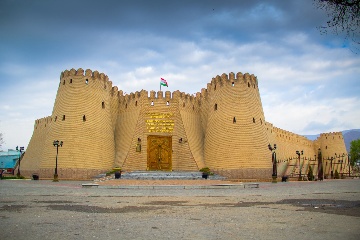Khujand Fortress, located in the heart of Khujand city in Tajikistan, stands as a remarkable testament to the region's rich history and cultural heritage. This ancient stronghold has witnessed over 2,500 years of turbulent events, serving as a crucial defensive structure and a symbol of resilience for the local people.

The origins of Khujand Fortress can be traced back to the 6th-7th century BC, when it was initially constructed as a simple earth embankment. Over time, it evolved into a formidable fortress with thick walls made of natural clay, surrounded by deep water-filled moats. The fortress played a pivotal role during the heyday of the Great Silk Road, not only protecting the city from invasions but also facilitating trade and cultural exchanges.However, the fortress faced a significant challenge when Genghis Khan's Mongol army besieged Khujand in the early 13th century. Despite the valiant defense led by Timurmalik, the fortress ultimately fell to the Mongols and was completely destroyed. This event marked a dark chapter in the fortress's history, yet it also highlighted its strategic importance.
In the centuries that followed, the fortress was gradually rebuilt and expanded, incorporating architectural elements from different eras. Today, although only remnants of the original structure remain, the site continues to attract visitors and archaeologists alike. The fortress has been partially restored, with a section of the eastern wall dating back to the 8th-10th centuries serving as a foundation for the local History Museum, Archaeology, and Fortification Museum. The museum houses a collection of household items, pottery, and tools discovered during excavations, offering valuable insights into the daily life of the ancient inhabitants.
Beyond its historical significance, Khujand Fortress holds cultural importance as well. It stands as a symbol of the city's enduring spirit and serves as a reminder of the region's complex past. The fortress also plays a role in preserving and showcasing traditional Tajik crafts and cultural practices, contributing to the local community's identity and heritage.
In conclusion, Khujand Fortress is more than just a historical site; it is a living museum that encapsulates the essence of Khujand's past and present. Its walls tell stories of ancient civilizations, invasions, and rebirth, making it a must-visit destination for anyone interested in Central Asian history and culture.




































